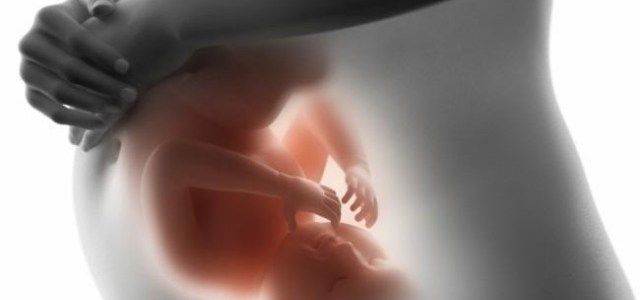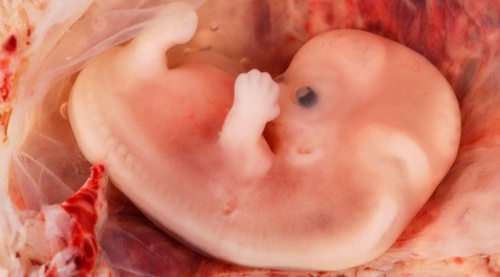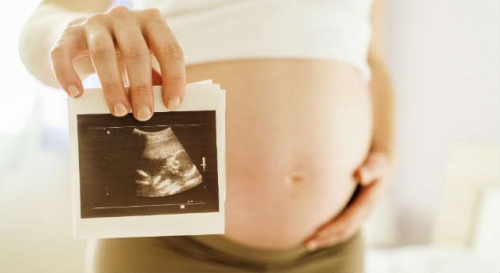Your Baby's Development in the Womb, Month by Month

Your baby’s development in the womb is truly astonishing. Even though most of the changes happen without you even noticing, all of them contribute to ensuring that every vital process does its job, so that your fetus can finish growing.
With each month that passes, your baby will have new physiological structures. Even from one week to the next, there can be important changes.
To determine your baby’s gestational age, your pregnancy is considered to begin on the first day of your menstrual cycle. The first few weeks of your cycle count even if at this point you are not actually pregnant yet.
Pregnancy: the miracle of life
A normal gestational period will last between 37 and 41 weeks, or around 9.5 months. If you are pregnant, or planning for a baby sometime soon, why not find out more about your baby’s development in the womb, month by month?
The first month
For the first two weeks between the beginning of your menstrual cycle and ovulation, your baby has not yet begun to develop. However, the process is already underway.
The first month is when fertilization occurs, and the zygote travels to the uterus through the Fallopian tube.
The zygote already contains the information necessary to make a fully-formed baby. To do this, though, it must first develop into a blastocyst, and then an embryo.
Meanwhile, the mother’s body is getting everything ready to protect the fetus during its development in the womb.
Second month
The second month begins in the fifth week of pregnancy. This is the start of the embryonic period. This is when the main structures develop, which will later support all the vital systems.
By this month, most cell devisions have already taken place. This means that cells can begin to specialize into various functions. For example, neurons develop at this stage, along with most blood cells.
These structures are also forming:
- The brain
- The spinal cord
- The heart
- The gastrointestinal tract
- The external features
Third month

We can count the third month from the sixth to ninth week of pregnancy. Here, changes are even more evident. Arms and legs are beginning to form, along with the tissue that will turn into bones.
In many cases, by the end of this month, the upper and lower limbs will already have grown, and fingers will have appeared.
Other changes are:
- The heartbeat becomes more regular
- Blood begins to flow through the main blood vessels
- Eyes and ears are gradually beginning to take shape
- The lungs have begun to form
- Some nerves can be seen in what will become the baby’s skull
Fourth month
At this stage, most organs have already formed, and are growing rapidly. This is why at this stage, instead of an embryo, we can begin to talk about a fetus. In addition, from this moment onwards, the facial features become more defined.
Development in the womb continues with:
- Elbows
- Nipples
- Toes
- Hair follicles
- Eyelids
- Ears
Fifth month
Although the fetus is already well developed, its head is still bigger than the rest of its body, and its skin is almost transparent. Although its eyelids have formed, they will remain closed until around the 28th week of pregnancy.
Other features that develop include:
- Appearance of the bone structure to support teeth
- Defined facial features
- Evidence of genital formation
- Nails begin to grow
- The liver begins to produce red blood cells
Sixth month

Although at this stage your baby is fully formed, their skin will still be translucent. Their head will be covered with a very fine hair: this is known as lanugo. However, their muscles and bones are getting stronger and stronger.
At this point, your baby is already moving around, stretching and beginning to practice sucking motions. They will become more and more active, because they can hear and react to stimuli. You will also be able to listen to their heartbeat through a stethoscope.
Seventh month
By the seventh month, the baby’s eyes will be properly formed, and the first deposits will be in their intestinal tract. Although air bubbles may form in their lungs, they will not be fully developed to breathe outside the womb.
Eighth month
In the eighth month, the fetus’s lungs will still be developing. This process is quite complex, although by this point their respiration is already regular. However, they will be growing and putting on fat. Their bones will be completely formed, although still very soft.
At this stage, the fetus is preparing to absorb and store many nutrients, chiefly phosphorus, iron and calcium.
Ninth month
The gestation period is now in its 34th to 40th week. At this moment, the fetus may already weigh up to two and a half kilos. They may still grow even more, but not by much. The fat that they have built up under their skin means that they are not so wrinkled.
Additionally, all of their organs have already completely developed, along with their muscles and bones. The lanugo, which once covered most of their body, is only found between their shoulder blades and on their arms, where it is denser.
The baby has already been in the womb for 38 months from conception, so it could be born at any moment.
All cited sources were thoroughly reviewed by our team to ensure their quality, reliability, currency, and validity. The bibliography of this article was considered reliable and of academic or scientific accuracy.
- Cabanyes Truffino, J. (2014). El comportamiento fetal: una ventana al neurodesarrollo y al diagnóstico temprano. Pediatría Atención Primaria, 16(63), e101-e110.
- Carlson, B. M. (2019). Embriología humana y biología del desarrollo. Elsevier.